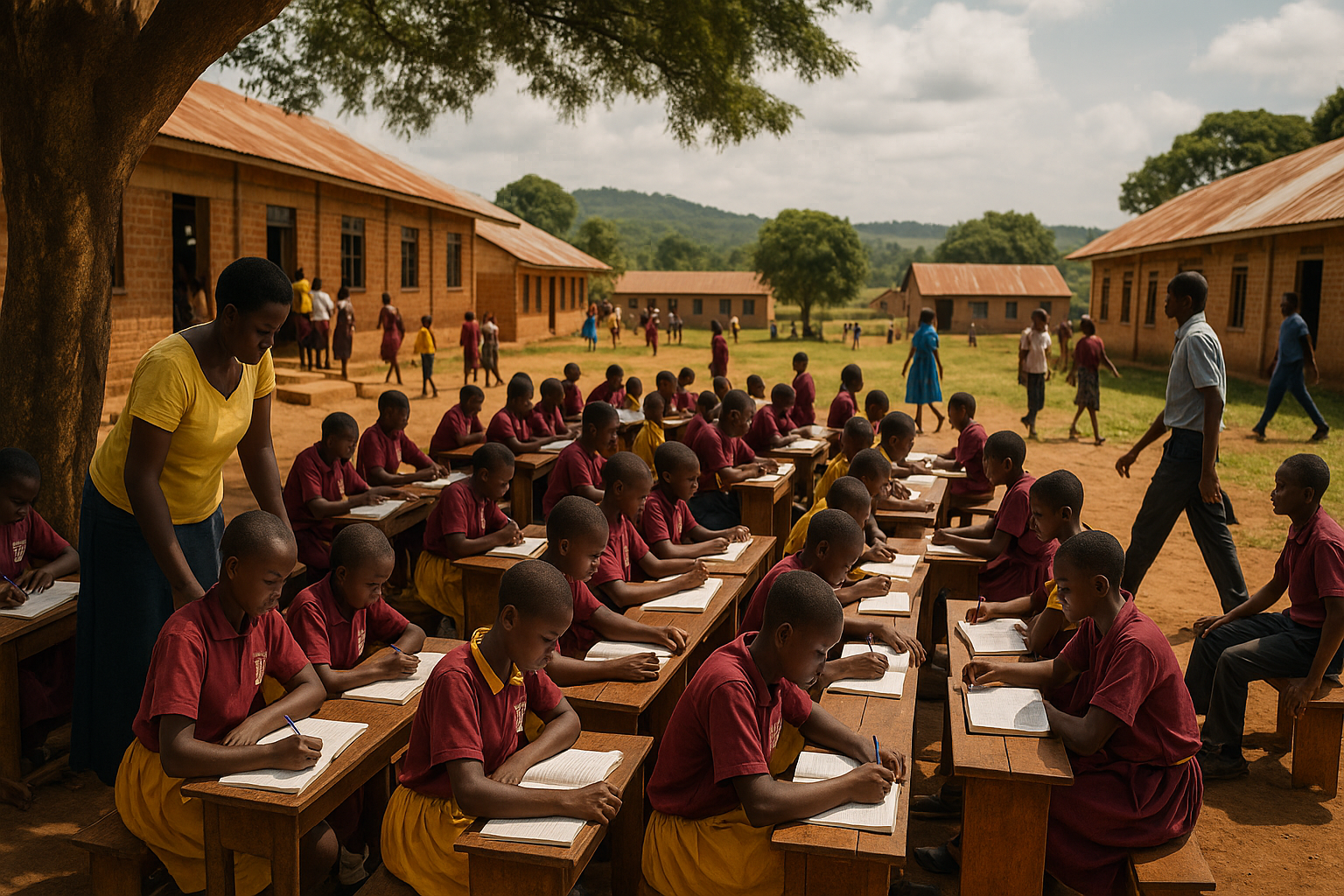From Classrooms to Prosperity: The Impact of Uganda’s Composite Scholarship Program
The MasterCard Foundation Scholars Program in Uganda significantly boosted secondary school completion, test scores, and reduced early fertility among poor, high-achieving students, while also improving their households' economic well-being. Though costly, the program proved effective in simultaneously enhancing education and alleviating poverty.

In a groundbreaking collaboration between the World Bank’s Development Impact Group and Brac Uganda, researchers Benedetta Lerva, Denise Ferris, and Margherita Fornasari investigate whether a comprehensive, high-investment education initiative can simultaneously enhance academic outcomes and alleviate poverty. Their subject: the MasterCard Foundation Scholars Program, a multifaceted initiative designed to help talented yet economically disadvantaged students in Uganda complete their secondary education. By covering school fees at elite boarding schools, providing monthly cash stipends, and distributing critical learning materials, the program aimed to remove the financial, informational, and behavioral constraints that often force students to drop out. The study uses a randomized controlled trial (RCT) involving 2,328 applicants, making it one of the most robust empirical evaluations of an education program in sub-Saharan Africa.
Catching Up with the World Through Schooling
The results are striking. Students who received the scholarship package were 10 percentage points more likely to remain enrolled in school after two years and 24 percentage points more likely to complete upper secondary education, a leap that effectively brought completion rates in line with those of high-income countries. Their academic achievements also surpassed their peers, with O-Level scores improving by 0.3 standard deviations and A-Level scores by 0.16. The probability of scoring in the top division in national exams rose by 12 percentage points. This academic edge is partially attributed to the high quality of schools they attended: 95% of treated students went to boarding schools, many of which ranked significantly higher in national performance indices compared to those attended by control group students. Tertiary education also saw gains, with program participants being 50% more likely to attend university.
Delayed Parenthood and Gendered Career Paths
Beyond academics, the program induced transformative life choices, particularly among female students. Fertility rates were halved in the treatment group, driven largely by women delaying childbirth. The proportion of female applicants reporting at least one child dropped by seven percentage points, and their use of contraceptives increased significantly, suggesting enhanced autonomy and access to reproductive health options. Interestingly, the program’s effects on labor market behavior revealed gendered divergences. While men in the treatment group were more likely to delay both study and work, women were more inclined to engage in both simultaneously, studying while taking up part-time, often lower-paid, employment. This pattern indicates that the program not only opened educational doors but gave women the flexibility and support to balance learning with earning.
A Big Push for the Whole Family
The benefits of the Scholars Program extended well beyond individual students. At the two-year follow-up, caregivers of treated students reported significantly higher savings, improved nutrition, greater psychological well-being, and enhanced asset accumulation. Families were more likely to own productive resources such as land, animals, and mobile phones. Caregivers, primarily mothers, reported lower depression levels and higher overall life satisfaction. These improvements mirrored those observed in major antipoverty programs, underscoring that secondary education interventions can double as economic empowerment tools. Even younger or older siblings of beneficiaries indirectly benefited, as families invested more in their schooling, particularly at the secondary level. While the control group typically spent less on siblings' education, households receiving support from the program allocated an additional $205 on average for older siblings, indicating a shift in educational priorities within the household.
Long-Term Gains and Fading Effects
Eight years later, several impacts remained, though some had faded. Treated students were still significantly more likely to have completed upper secondary and enrolled in tertiary education. However, household-level benefits showed a mixed picture. While initial improvements in savings and nutrition diminished over time, gains in women's decision-making and overall expenditures persisted. Asset accumulation remained higher in treated households, though statistically less precise. The psychological benefits for caregivers tapered off, likely due to ceiling effects. Earlier data showed poor households had caught up to wealthier ones in mental well-being within two years. These patterns suggest that while some effects are temporary, others, especially those tied to structural changes like education and empowerment, have staying power.
Weighing the Costs: Effective but Not Efficient?
The program's total cost per student was substantial: $6,330 over two years. This raised questions about scalability and efficiency, prompting a detailed cost-benefit and cost-effectiveness analysis. When only considering improvements in household consumption and asset accumulation, the benefit-cost ratio stood at 35%. Including estimated lifetime returns to education and increased savings pushed this figure to 76%. Compared to other targeted antipoverty initiatives in countries like India, Ghana, or Peru, the Scholars Program ranked lower in cost-efficiency. Moreover, its cost per learning-adjusted year of schooling and test score improvement was far higher than that of simpler interventions such as remedial tutoring or cash transfers.
Despite these cost concerns, the program delivered something most education or antipoverty interventions struggle to achieve: simultaneous and significant gains in education and socioeconomic mobility. While it may not be the most economical option, it effectively bridges short-term poverty alleviation with long-term human capital development. For policymakers seeking to break the cycle of intergenerational poverty, this “big push” model offers an inspiring, if expensive, blueprint for change. The evidence is clear: when supported fully, talented students from poor backgrounds can thrive and lift their families along with them.
- READ MORE ON:
- Uganda
- World Bank
- education program in sub-Saharan Africa
- Ghana
- labor market
- FIRST PUBLISHED IN:
- Devdiscourse
ALSO READ
From Copra to Crops: World Bank Calls for Diversified Farming in Kiribati
Ugandan President Museveni Set for Reelection Bid Amid Controversy
World Bank's $150 Million Boost to Empower Tamil Nadu Women
Roadmap to Smarter Employment Services: World Bank’s 2025 Digitalization Blueprint
World Bank's $146 Million Aid Boosts Syria's Power










